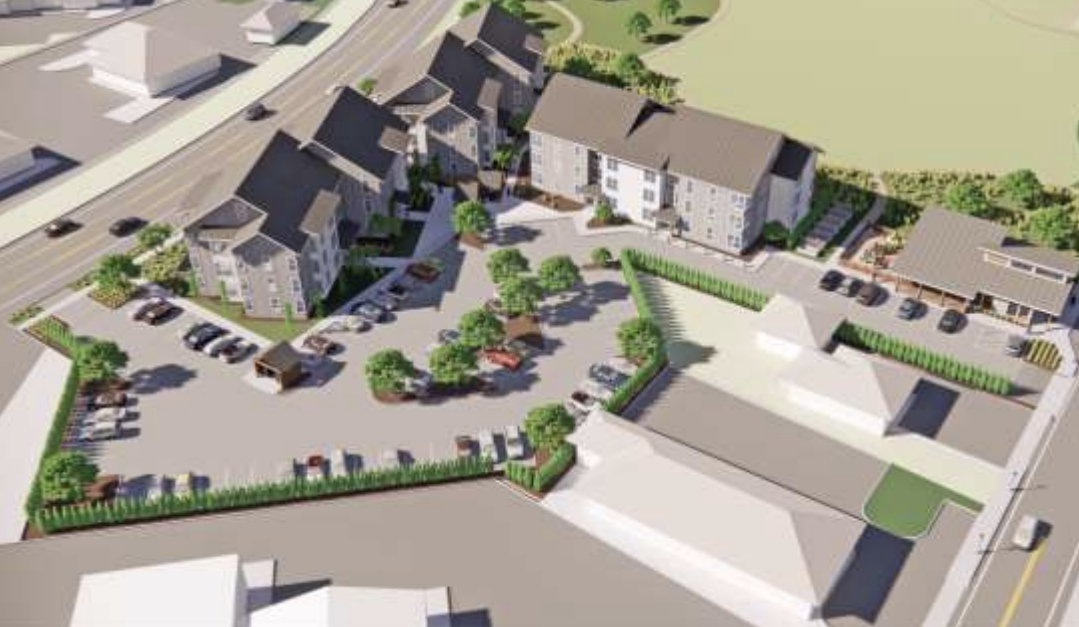Out of the ashes: Destruction and regrowth
Published 1:00 pm Friday, April 14, 2023

- The building at 14th and Duane streets is now home to the Norblad Hotel.
The story of Astoria is one of destruction and regrowth, with buildings stacked upon the bones of their predecessors. Fires in 1883 and 1922 destroyed swaths of downtown while opening up space for new growth born of the region’s industrial ambition.
In this spirit, Astorians started construction 100 years ago at 14th and Duane streets on the Miller-Jeffers Building, now the home of the Norblad Hotel.
The building’s story begins with the development of Astoria’s downtown, starting in 1841. Buildings were placed over the tidal flats of the Columbia River, and Ferdinand Ferrell’s sawmill was right in the heart of it all.
Familiarly known as “Old Dad’s Mill,” Ferrell Mill employed many workers outside of the salmon industry. The site also attracted younger Astorians, who found the piles of leftover wood shavings to be an ideal landing spot for Olympic-worthy somersaults.
Others, a little older, found the area below the mill’s wooden platform to be the perfect spot to smoke cigarettes after school. This combustible combination ignited at 5:50 p.m. on July 2, 1883, when a fire erupted underneath the sawmill.
Unfortunately, the mill had no buckets, no hose and no water pump, so despite being built over tidewater, the mill went up in flames and the fire spread east, burning three blocks of Commercial Street.
The site where Ferrell Mill was destroyed remained an open tidal flat for nearly three decades as the rest of downtown regrew around it. At the turn of the century, Duane Street was fast becoming Astoria’s “auto row,” and the empty block was prime real estate for new construction.
In 1909, a new building for Sunflower Dairy Co. was constructed on the corner of 14th and Duane. That same year, Albin W. Norblad moved from Michigan to Astoria, where he began practicing law and establishing business ties.
He started with a seat as president of Sunflower Dairy Co. alongside his brother, George F. Norblad, who became the dairy company’s vice president, and Alpheus C. Miller, who served as its secretary and manager. But the trio of businessmen did not stand together for long.
Albin Norblad moved on to become Astoria’s city attorney, president of the Oregon State Senate and eventually Oregon governor. George Norblad moved his family to Portland, where he co-managed an apartment building with his wife, Emma. Miller continued at Sunflower Dairy Co. as secretary and treasurer and was joined by a new president, John H. Jeffers.
The block of 14th and Duane eventually met another unfortunate fate on Dec. 8, 1922, when it was among the 30 blocks of the downtown district destroyed by the Great Fire of 1922.
Just three months later, business partners Miller and Jeffers announced plans for a new two-story concrete and brick building designed by John Wicks, an Astoria architect.
Construction began in April 1923 on the Miller-Jeffers Building, atop the site of the former Sunflower Dairy Co.
The footprint of the new building covered only half of the block, but its foundation extended the length of the full block for the future purpose of erecting an adjoining two-story structure once the first building was complete. Despite these plans, Miller and Jeffers never expanded onto the adjacent foundation.
The northeast corner of the Miller-Jeffers Building also became the permanent home of the city’s Bank of Commerce, which had been operating temporarily out of the Clatsop County Courthouse basement since its former Commercial Street building perished.
Although the new bank location exhibited a less extravagant facade than some of its local peers, the entrance featured an elaborate terra cotta portico facing Duane Street with decorative molding above dentil detailing, festoons flanked by rosettes and two pilasters on either side of the double front door, surrounded in an egg and dart motif.
In January 1924, the Bank of Commerce became the first financial institution in the city with permanent quarters since the fire, though its doors closed only five years later after the stock market crash of 1929.
Miller and Jeffers designated the remaining first-story sections of the building as storerooms, while the second floor was laid out for professional offices. Six months after construction began, however, the partners began to recognize a growing hospitality industry. They decided to instead build out the second floor as a 36-room hotel.
This new opportunity brought Miller’s former business associate, George Norblad, back to Astoria to manage the hotel on a 10-year lease. The Norblad Hotel, housed within the Miller-Jeffers Building, began checking in guests in January 1924.
After only a year of running his namesake hotel, George Norblad broke his commitment to the 10-year lease and transitioned management of the hotel’s operations to Mr. and Mrs. Randles, of Portland. George Norblad and his wife then returned to Portland, where they continued work in hospitality for a different hotel.
The story of Astoria continues to grow and evolve. Over the years, the Norblad Hotel has experienced various iterations but has continued to welcome visitors beneath its glass and pressed tin canopy for nearly a century.
The Miller-Jeffers Building has been no stranger to the town’s industrial spirit, offering a home at various times to a cafe, hardware store, employment office, the Astoria Chamber of Commerce, a music shop, two thrift stores and many more.
Editor’s note: At just after 2 a.m. on Dec. 8, 1922, a fire broke out near 11th and Commercial streets in Astoria that burned into the night and morning, destroying more than 30 city blocks. This article begins a series on the rebuilding of Astoria’s downtown following the Great Fire of 1922 by profiling buildings as they celebrate their centennial anniversaries.





